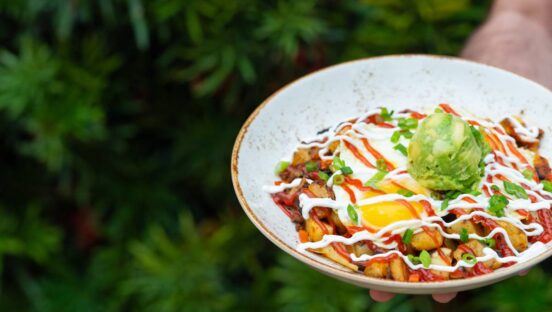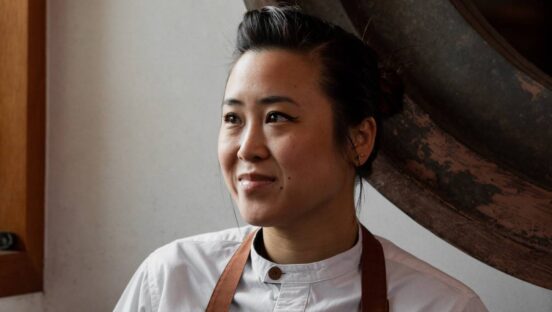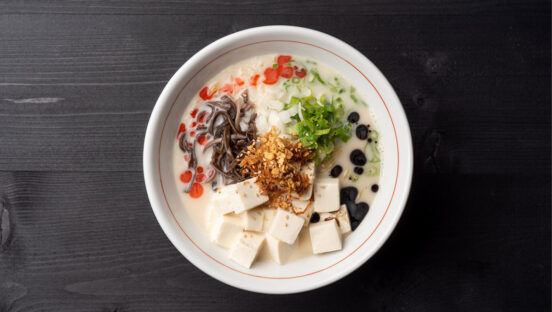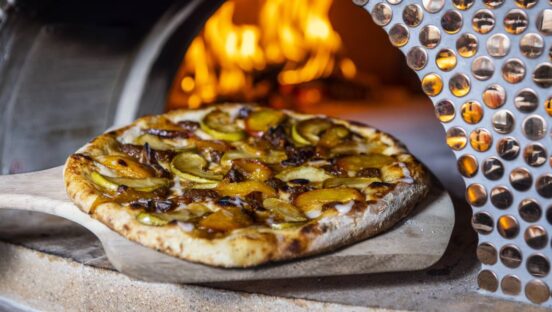









Riding the high-speed train from Austria into northern Italy in late December, through the Po River basin, past blurred bare trees and acres of dormant vineyards set against the snow-capped Italian Alps, one could call it off-season here. But winter in northern Italy is an ideal time to appreciate the meaty, soul-warming braises; fresh handmade pastas; prized salumi and sausages; and exceptional dairy that form the foundation of this rich, satisfying cuisine. Last month, I ate my way through meaty Bologna, cosmopolitan Milan and Tuscan jewel Florence. Here are a few of the culinary highlights.
The furthest cry from the flabby pink baloney of our collective childhood lunchboxes lives in Bologna, Italy, and its name is mortadella. For some two millennia it’s fed everyone from the Roman army to Napoleon Bonaparte to Buffalo Bill—not to mention generations of lucky Italians. Butchers pulverize lean pork shoulder meat, dot it with lard and season it lightly with pepper, nutmeg, and pistachio before it’s squeezed into oval casings, hung, and cooked low and slow. The result is a subtle, sweet-savory, and beautifully springy sausage, which we took to ordering whenever and wherever we saw it: piled on a panino with preserved bitter greens, arranged in wispy ribbons on an antipasto platter alongside a bottle of crisp lambrusco, or minced and stuffed inside delicate tortellini wading in satisfying chicken broth.
Never in my life could I have predicted that a beef stew appetizer would rank near the top of my all-time favorite eating memories. This Tuscan specialty begins by marinating beef or wild boar in a heady mixture of red wine, juniper berries, black pepper, and wintery herbs. The following day, the mixture joins with sautéed onion, carrots, celery and garlic, tomato, cinnamon, and nutmeg for a long braise. At unapologetically beef-centric Trattoria Mario off Florence’s Piazza del Mercato Centrale, the burnished, peppery peposo arrived as an unadorned primi alongside a basket of crusty bread and small carafe of Tuscan house red. All around us, practiced diners chased their peposo with hulking rare slabs of bone-in ribeye spritzed with lemon. We opted for a more “modest” follower of tagliatelle al ragù.
Unlike southern Italy, which is renowned for dried pastas, the north is home to some of the country’s most beautiful fresh pastas. From eggy tagliatelle ribbons to beautiful hand-shaped stuffed pastas like tortellini—whose origins are disputed between Bologna and Modena—and the hat-shaped balanzoni, which gets its deep-green hue from spinach, each is slicked in luscious sausage ragu or meaty bolognese, or pooled in herby cream sauce with shards of crispy prosciutto
There’s a reason you see Italians enjoying an al fresco scoop of gelato even when the temperatures barely surpass freezing. This exquisite, 12,000-year-old dessert transcends seasonality—whether your preferred style is Florentine fior di latte, eggy gelato alla crema d’uovo, or palate-cleansing sorbetti. If, like us, you find yourself a bit delicate for a winter cone, don’t despair. Bologna shows off Emilia Romagna’s exceptional dairy in many ways, like this mascarpone cream: a dead-simple, cloud-like amalgam of lightly sweetened whipped cream and mascarpone dusted with cocoa powder. Wash it down with espresso for the perfect cap to an indulgent winter meal.
Yes, this is yet another entry on pasta, but I’d argue that this shape deserves a category all its own. I began scouting gramigna the moment we debarked the train in Bologna. This hollow-centered hybrid of macaroni and bucatini is lesser-known beyond Italy’s borders—and positively heavenly. It’s usually tossed in hearty sausage or beef ragu spiced with wintry herbs, which envelops the toothsome exterior and seeps into its hollow center.
Duck into any café in Italy (before 11 a.m. if you’re a purist), and you’ll encounter a similar scene. A smattering of locals lean on the counter and trade gossip while they down an espresso or cappuccino. In the latter, three distinct strata of caffé, hot milk, and frothy foam topper become one with a quick swipe of the teaspoon. You may pair your caffeine injection with a nutella- or marmalade-filled brioche (Bologna specialties), simple toasted ham and cheese sandwich or crunchy biscotti for dunking. No to-go cups here. Just a few ritual minutes of joy to kick off the day.
You don’t have to tell a chef twice that one of the best ways to get to know a city is to visit its local food markets. Florence’s Mercato Centrale (also known as the Mercato di San Lorenzo) unfurls across two sprawling floors of bustling stalls. On the ground floor, you’ll find butchers peddling whole chickens, beef, wild boar, and white sheets of tripe; fishmongers offering Italian and imported seafood, including slippery anguille; and a range of white mold-caked salumi, fresh bufala mozzarella, spicy olive oils, wine, produce, and a rainbow of dried pastas. Upstairs, a food court plies diners with everything from pizzas and dipped boiled beef bollitos, to burgers, beer, and Chinese dumplings. “Don’t touch that,” a produce vendor scolded sharply before extolling the quality of the Sicilian lemon I was squeezing at his fresh fruit and veg stand. Nonetheless, we left bearing a bundle of purple-tinted fresh artichokes, which we later shaved into a simple salad with escarole, spicy olive oil, Parmesan, and the juice of said delinquently handled lemons.
Wandering the streets of Milan’s trendy Brera district in search of dinner, we were surprised (and delighted) by how many trattorias and osterias close their doors for a week or more following New Year’s Eve. We finally stumbled upon an open osteria down a quiet alleyway beneath a canopy of twinkle lights. This being our first night in Milano, we began with local Franciacorta brut sparkling and cured meats, followed by this sunshine-yellow risotto, perfect in its simplicity. Carnaroli rice kernels are plumped till al dente with saffron-tinged stock deepened with bone marrow, and finished with butter and salty Parmesan
Roughly translated, this is the phrase in Italian that adorns the façade of this diminutive storefront tucked amid indie perfumeries in Milan’s posh Brera neighborhood. De Santis slings an impressive 200-plus varieties of delicious panini, organized by protein (bresaola, speck, salumi, etc.). Stationed behind a small glass display case, a pair of sandwich makers deftly layer all kinds of meat, fish, cheese, veg, and condiments on squishy, parbaked house white bread that’s pressed till crackly. Expect mouthwatering results like bresaola with mozzarella, olive pate, and arugula; and raw ham with basil goat cheese, tuna, and cocktail sauce. The smallish sandwiches run between 6 and 10 euro, so do as the locals do and order extra.












